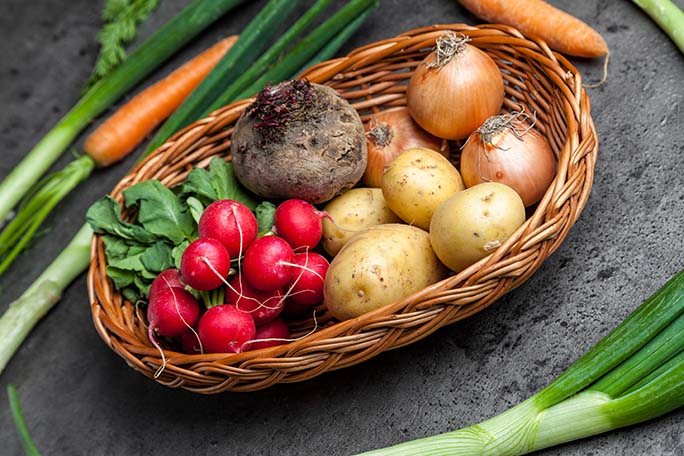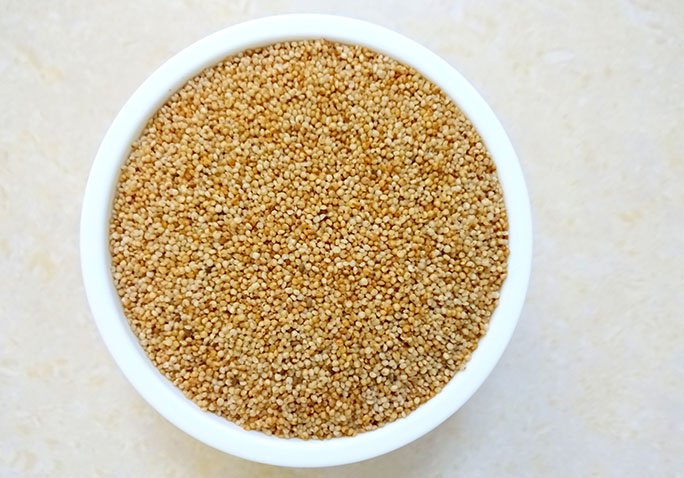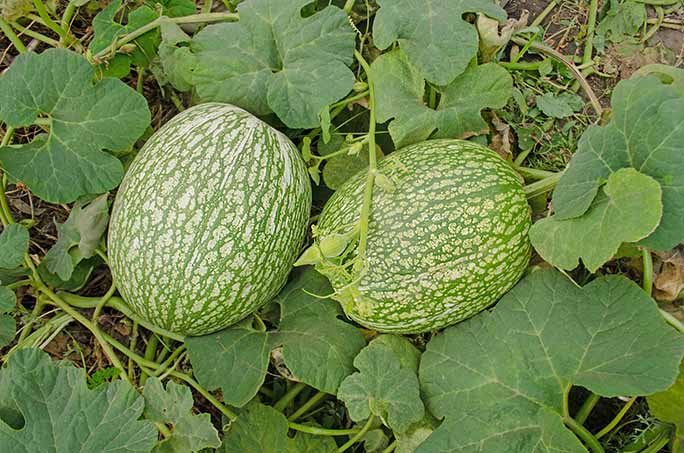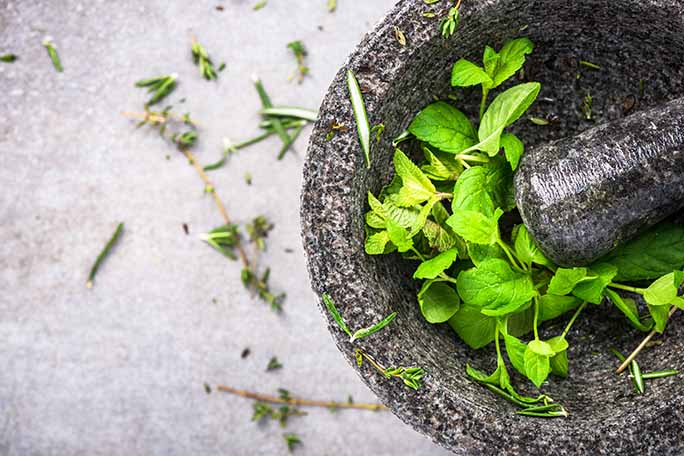Popular across countries like India, Myanmar, and Sri Lanka, Horse gram has immense importance as a food source both for the people as well as for cattle mainly due to its high nutritional value and health benefits.
Horse gram has been used since ancient times for a variety of purposes mainly as a food crop and also as a medicine for the treatment of various problems like menstrual disorders, kidney and bladder stones, etc (1).
Although the use of these lentils as a food for humans is less common in European and American countries it is mainly as a feed for horses, so the name Horse gram.

Everything you need to know about Horse Gram Plant
Horse gram is an excellent drought tolerant plant that can reach up to a height of 60-80cms. It is now mainly cultivated in tropical Asian countries especially in India, where horse gram is commonly used in cooking.
It grows best in the dry and warm climate with temperatures around 30oC and does well in most soil varieties. However, the plant doesn’t tolerate waterlogging and frost.
Propagation of this plant is done by seeds. As the seeds are covered by a hard coat, they are usually soaked in water for 24 hours before sowing.
The leaves of the plant are large and trifoliate (three leaflets attached). Flowers are small and appear as if divided into two identical halves and attached in the middle just like a butterfly and they usually come in white color. Sometimes the flowers can also be seen in the light purple or light yellow color or just with purple in the center.
The pods of the plant measures about 1.5-2 inches containing 5-6 seeds. The seeds may also vary in their color in between black, white or wheatish. The crop can be harvested in 3½ to 4 months from the time of sowing.
Horse Gram Nutrition
Horse grams are packed with nutrients and are an excellent source of several compounds like iron, molybdenum. It is also a rich source of proteins that constitute about 20-25% of its composition. They are really a very low-fat diet where the fat makes about 1.4%.
In addition, they are also a good source of carbohydrates and dietary fiber.
However, the seeds too have some anti-nutritional components like phytates, polyphenols, hemagglutinin and trypsin inhibitors (2,3).
But cooking, germinating, roasting of these seeds had shown a positive effect on the nutritional quality by reducing the activity of the anti-nutritional compounds (4).
Health Benefits of Horse Gram
Since ancient times, horse gram is a potential food source for many Indian villages, especially in the farming community. It was highly valued as a food source that can provide a good amount of energy immediately when consumed. On the other hand, it was also called as a poor man’s pulse due to its low cost.
There was a time where this ancient grain has been seriously neglected by modern society and it had almost lost its place as a special food item especially in India dishes.
As the concern over individual health is increasing day by day, people are turning towards good old natural foods like Finger Millet(Ragi), Kodo millet and others that were known to keep fit and healthy. So, it’s not surprising to see Horse gram becoming popular again as a healthy food source in the recent years due to its potentiality in reducing obesity, helping cope with menstrual problems and aid in bowel moment and other health problems.
It may help to Control Obesity
Several ancient texts of Ayurveda had described the diet of horse gram is effective in treating obesity and its associated disorders.
Scientific studies conducted had also said that these lentils are effective in controlling obesity.
In a study, animals fed with high fat diet were tested with Horse gram extract to know its effects on the high cholesterol levels and the results had shown positive effects against hypercholesteremia and obesity by decreasing the parameters like total cholesterol, low density lipoproteins, and triglycerides (5).
In another study, an herbal premix prepared with horse gram, whey protein, ginger, and peppermint were tested on animals fed with high fat diet by giving the premix in milk and in the water at a dosage of 1.5g/kg of body weight along with aerobic exercise in different combinations.
The results had shown that the treatment had significantly reduced weight gain, BMI, abdominal circumference. The study also said that premix with exercise is the complete way to combat obesity (6).
It may help to prevent Kidney Stone Formation
Kidney stones are one of the common problems of the urinary tract. They are hard deposits of minerals that form inside the kidneys and are majorly made up of calcium compounds. They are associated with severe pain while passing through the urinary tract.
Several studies suggest that diet plays a major role in the prevention of kidney stone formation. In Ayurveda, Horse gram had been recommended as a medicine for the effective treatment of these stones (7).
Research conducted on horse gram had said that its seeds contain compounds that are known to inhibit the calcium phosphate crystallization that acts as a major constituent of kidney stones. The study also says that anti calcification activity of the seeds is decreased on maturation and post-harvest storage for 6 months (8).
A food source with significant Antioxidant Activity
Horse gram is a great source of antioxidants, this lentil is a rich source of protein, vitamins, and minerals that are essential in preventing free radicals from damaging the cells and tissues.
On the other hand, they contain some of the bioactive compounds like phytic acid and phenolic acid that are known to have potential antioxidant activity.
When thirty different varieties of legumes were studied for their antioxidant activity and phenolic content using different tests, Horse gram was found to be one of them showing high DPPH free radical scavenging activity (9).
In another study it was revealed that administration of Horse gram to rabbits induced with high fat diet had shown a significant decline in thiobarbituric acid reactive substance (TBARS) levels, showing the signs of antioxidant nature of the horse gram.
In addition to that, the GSH levels were also enhanced. GSH is also known as glutathione is a major antioxidant capable of fighting against free radicals and also act as a detoxification agent. An interesting finding from the study was, high dose of horse gram was more effective and had shown a comparable effect with standard drug Atorvastatin (10).
It may be helpful during Irregular Menstrual Cycle
In India, Horse gram is believed to have several curative properties and is taken as a medicine that can regulate the menstrual cycle. Ayurvedic texts too describe the use of Horse gram for the purpose of the irregular menstrual cycle and other related issues.
It has Wound Healing Nature
The importance of Horse gram for treating wounds is well recognized in folk medicine and several traditional medicinal systems. The ability of horse gram in healing a wound can be attributed for its anti-inflammatory, anti-microbial and antioxidant nature.
In vivo experiment had shown, when a combination of collagen sponge and horse gram extract was applied to the experimental wounds, it had enhanced the wound healing process by upregulating several growth factors and also by reducing inflammation, scar formation thus contributing to the faster wound healing process (11).
It has Pain Relieving Properties
Horse gram is also known to exhibit potential analgesic properties. Animal studies conducted using horse gram methanol extract had shown that the extract had exhibited both central and peripheral antinociceptive activity. Another study conducted using fixed oil prepared from Macrotyloma uniflorum (Lam.) Verdc had also shown that the horse grams have potential analgesic properties (12,13).
Antimicrobial Activity
In traditional medicine, Ulavalu were used to treat various illnesses like fevers and respiratory problems. A pudding that was prepared by using rice, stir fried horse gram grains and a pinch of turmeric was known to ward off infectious organisms that were known to upset stomach.
Research had found that horse gram had exhibited moderate anti-microbial activity against some of the disease-causing microorganisms such as Pseudomonas aeruginosa, Salmonella sp., E. coli, and Klebsiella sp (14).
Helps to Reduce Inflammation
Several studies indicate that Horse gram is known to exhibit powerful anti inflammatory and antioxidant properties.
Research conducted using horse gram seed extract had shown that the extract at a dosage of 50mg/kg had exhibited its maximum paw edema inhibition at the third hour of carrageenan induction. The effect of the extract is higher than the standard anti inflammatory drug Voveran compared.
Upon the phytochemical analysis, the extract had shown the presence of alkaloids, tannins, flavonoids, proteins, and carbohydrates that may contribute to its anti inflammatory properties (15).
It may act as a Diuretic
Diuretic drugs are mostly used to treat high blood pressure and some of them were also used for heart failure and kidney diseases. These drugs act by excreting water from the body and significantly lowering the blood pressure.
Some of the foods that we eat also acts as an excellent diuretic substance such as Bottle gourd, Ulavalu, and Musk Melon.
In a study conducted to know the diuretic nature of horse gram and musk melon, had revealed that both the plants had a significant diuretic nature. However, the diuretic nature exhibited by musk melon was far more significant than Horse gram and furosemide, a standard drug (16).
Interestingly, when horse gram and musk melon were combined, it resulted in a synergistic effect showing diuresis and significant increase of sodium ions in urine.
Culinary Uses
Horse gram or Kulthi seeds as whole or ground are consumed as a food by boiling or poaching.
In Myanmar, dried seeds are boiled with water and are fermented to prepare a sauce that tastes like the soya bean.
Boiled seeds of horse gram are cooked by adding onions, chillies and are tempered with spices to make a variety of dishes in India. Sprouted seeds of Horse gram are also widely consumed due to the high bioavailability of nutrients.
In South Indian states, dishes prepared from horse gram are very popular and each state has its own unique recipies made from this pulse such as Ulava charu, Kollu charu, Muthira thoran, and Huruli saaru. If you ever take a trip to these places don’t forget to taste these delicious food items.
Ulava Charu or Kollu Charu Recipe
Ulavacharu is an authentic recipe prepared in the southern part of India especially in Andhra Pradesh and Telangana regions
To prepare this dish, wash 1 cup of horse gram thoroughly and soak them overnight with a good amount of water.
Boil the soaked horse gram for about 45 mins. If you are using a pressure cooker it takes 4-5 whistles to get completely cooked.
After that, drain the boiled water into a separate bowl. The remaining boiled grains can be mashed and added to the dish to bring a thicker consistency. Excess of mashed up grains can be used to prepare any other dishes like cutlets or it can be fed to cattle.
Now take a pan and heat 1 tablespoon of oil. Add some mustard seeds and let it splutter.
Now add some cumin seeds, red chillies and curry leaves and wait for few seconds until they splutter.
Once it was done add some onions and green chillies and cook them for 2-3 minutes.
Now add the strained horse gram water to the pan and then add a cup of tamarind juice and also the mashed paste. Let it boil for 30 mins until the water gets the consistency of a soup.
Now add some jaggery and cream and cook for about a minute.
That’s it simple, delicious and nutrient rich ulava charu is ready.
Word of Caution
Although Horse gram is safe to consume. It was believed in the Ayurvedic system of healing that consuming high amounts of horse gram may lead to an increase in body heat.







Comments